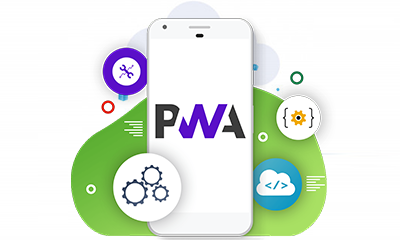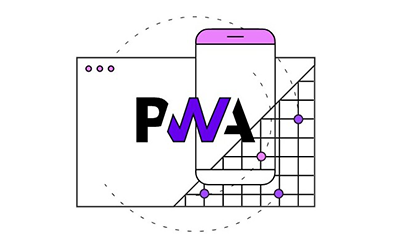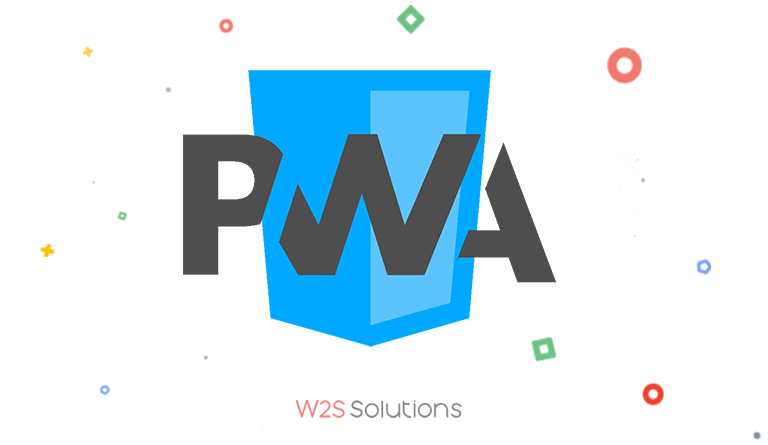The rise of the digital era has witnessed many innovations that completely changed the way humans envisioned the future. The success of the digital era is solely due to the customer-centric approach. In fact, the birth of digitalization transformed the perspective of businesses. As customers have unique needs, the theory of ‘one size fits all’ doesn’t apply here. This increased the number of players on the field. If you want to buy a smartphone, you can choose one from a million choices! This abundance of choices created different platforms like Windows, Linux, Android, iOS, etc.
Fast forward, the internet has become an important part of our lives and almost every electronic device could connect to the internet. Smartphones and computers have evolved as a necessity rather than a utility device. This opened up millions of native applications into the platform that made the devices more functional. A new problem arises now. To make these applications, the skills to work in specific platforms are needed. One size doesn’t fit all. Different versions of the same applications are developed to make the application available in different operating systems and platforms. This led to the birth of native applications.
A native application is software that is designed and developed to operate on a particular platform. Progressive Web Applications are nothing but native applications on steroids. PWAs have all the functional abilities of a native application but are designed by taking the internet as a platform. All you need is a web browser to access any PWA. Everything else feels like your normal platform-specific application.
Read Also – The Future of RPA: 2021 Trends and Future Predictions
This raises the question; if it looks and feels like a native application then why PWA?

The answer is simple- usability. Digitalization has indeed made use of the internet to a greater extent, but the real potential lies in using it as a platform. Using the internet as a platform is a sure shot way to increase the reach and usability by many folds. There is no restriction of the platforms as the internet is a common thing among most computing and electronic devices. Though using the internet as a platform is still in its infancy, the arrival of the tech giants like Microsoft and Google in this space has expected to increase its scope. The functioning of ChromeOS is a great example of the potential of using the internet as a service.
As PWAs are lightweight, tech companies could minimize the cost of production by a great percentage. The skin is practically non-existent, so the need for higher-end specifications is not a necessity. It can operate in low-level specs without compromising its usability. Most of the design work is front-end related; hence the cost to develop a progressive web application is significantly lesser than creating native applications. As progressive web apps can be used from any web browser, the type of device they use and the type of software they use are out of context.
Advantages of progressive web apps
Reach and access

As people who use various devices like smartphones, laptops, computers, tablets, and even cars are divided by the type of platform they use, the internet is the common blanket that covers all of them. It is easier to reach people using the common platform rather than approaching them individually. As electronic devices come in various screen sizes, it is important for the applications to be as fluid as possible. Progressive web apps do this very well as they are basically running from a web browser.
Progressive web apps are basically websites in native application dress. Accessing a PWA is similar to accessing a website. Though PWAs can’t be classified under a traditional website, the ease of access makes it look like one.
Future
It is no doubt that progressive web apps are the future of application development. As more and more IOTs enter the picture, the need for progressive web apps has higher scope. Almost every tech giant is trying to get a piece of Progressive web apps. The incorporation of the internet across different devices has laid a foundation for the development of progressive web apps. Since a web browser is the only requirement for a progressive web app to run, the scope of these apps is higher than ever. If you have a car that can connect to the internet, the development of native applications would drain you out. Instead, you can simply use a web browser and use progressive web apps in it.
Read Also – Business Benefits Of Hiring An IT Consulting Company
Easy to make one

Platforms in a way are a big obstacle for application developers. Developing applications for a particular platform are in a way restricting the developers to expand. Platforms are always tied to a specific device. For example, iOs applies only to Apple products. Android products cannot run iOs. Similarly, macOS devices cannot run the Windows platform. Each of the platforms is governed and protected by certain technical and ethical obligations.
In this context, making use of one of the biggest platforms that connect almost every electronic device ever made is a practical solution to overcome this obstacle. Also, unlike most platforms, the making of progressive web applications does not drain a lot of energy. Basic development skills like HTML, CSS, and Javascript are enough to create a progressive web application.
Cost-efficient
The development of any application needs specific technical skill sets. As particular skill sets are more difficult to learn, the cost of hiring that particular skill is also higher. Most of the skills that are required to develop progressive web apps can be found easily when compared with others. Comparatively, the cost for these skills is lower than hiring talents who have kotlin or swift or flutter. The cost of maintaining progressive web apps is also on the lighter side. If there is a rectification of a bug, there is no need to apply it to different platforms. Progressive web apps can be used from a web browser and hence, everyone uses the same version of the application.
Read Also – Conversational AI: The Next Frontier Of Digital Transformation In Healthcare
Drawbacks of PWA

It is highly impossible to create a 100% bulletproof technology of any sort. There is a space for error and the goal is to compress this space as much as possible.
Gamble on UI
Progressive web apps are more dependent on front-end technology. There are no previous versions you could fall off. Progressive web apps depend on the design and user interface too much that any mess in this part could be a fatal hit. More focus should be given to the user interface and there should not be any slacking there. Unlike native applications, progressive web apps focus more on precision. The purpose of the PWA should be easily identifiable and be direct to the users. First impressions do last forever!
Keep searching

The probability of a user finding a particular native app is higher than stumbling upon a progressive web app. Irrespective of the marketing efforts, native applications have their own platform. This means a group of people is going to use this platform no matter what. This is not the case with progressive web apps. Progressive web apps focus more on the user’s problem and care less about the platform it is residing in. All a user needs is a web browser to access progressive web apps and hence the proximity of a PWA falling under the user’s radar on its own is relatively lower than native apps.
Still under development
Progressive web apps are pretty much a new thing to developers and users. The amounts of innovations that can be stuffed into progressive web apps are pretty much zero at this point. There is no space for incorporating things like NFC or Bluetooth sharing, etc. Many native applications allow users to access device capabilities as fingerprint scanners and face unlocks, but progressive web apps cannot make use of these features at the present. This is mainly due to the restriction of the browser capabilities on a device.
Read Also – Data Analytics vs. Big Data vs. Data Science – A detailed comparison
Finishing up
Though progressive web apps have a short history, their effect in today’s world is relatively higher. There is no way the internet and its features are going to stop growing. This makes progressive web apps a significant place to concentrate upon. The customer-centric business model revolves around one core thing- flexibility. It is difficult to maintain 100% flexibility in a money-making body, but web development companies have found that progressive web apps are flexible yet customer-centric. This may look like an experimental setup and look overwhelming for some people. There are many Web Development Companies in Austin that can take the pressure off you using creative solutions.



